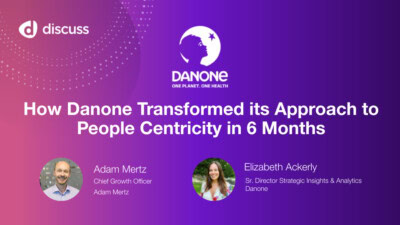Introduction to Qualitative Data Analysis Methods

Ever wondered why people choose one brand over another? It’s not just about price or flashy ads; it’s also about emotions, experiences, and the stories behind consumer choices. This is where qualitative data analysis (QDA) comes in—offering a treasure chest of insights that numbers alone can’t provide. Through techniques like interviews and focus groups, QDA helps marketers dive deeper into the minds of consumers. In this article, we’ll explore how harnessing these valuable insights can transform your marketing strategies and strengthen connections with your audience. Let’s unpack the powerful role of qualitative research in understanding what truly drives customer behavior.
Qualitative data analysis in marketing is crucial for understanding consumer perceptions and motivations through unstructured data, such as interviews and focus groups. This method provides deeper insights into customer experiences and emotional responses, ultimately enriching marketing strategies and enhancing product development efforts.
What is Qualitative Data Analysis?
Qualitative Data Analysis (QDA) is a systematic approach to interpreting non-numerical data, exploring the world of emotions, attitudes, and perceptions that shape consumer behavior. Unlike quantitative analysis, which focuses on numbers and measurable data, QDA concentrates on human experiences—providing a more comprehensive view of what drives customers’ decisions. This is crucial for marketers who want to connect with their audience.
At its heart, QDA aims to uncover the underlying reasons behind consumer actions. For example, when analyzing customer feedback, marketers don’t just want to know whether a product was liked or disliked; they seek to understand why consumers feel that way. Was the product too expensive? Did it not meet their expectations? Such insights can lead to transformative changes in product development and marketing strategies.
Key Components
As we explore the components of QDA, it’s essential to understand that this process typically unfolds in three stages: data collection, data coding, and analysis. Each stage serves as a stepping stone toward unlocking valuable insights.
- Data Collection: The first step is gathering raw, unstructured data from various sources including interviews, open-ended survey responses, focus group discussions, and even social media comments. These sources yield rich narratives that reveal how individuals think and feel about products or services.
- Data Coding: Next comes the critical phase of categorizing and coding collected data. This involves identifying patterns, keywords, or themes from the conversations. Coders might label responses with tags such as “satisfaction,” “frustration,” or “desire,” allowing for a more organized view of the feedback landscape.
- Analysis: Finally, it’s time to interpret the coded data to extract meaningful insights. This step requires researchers to look beyond mere statistics and recognize broader implications regarding customer experiences and motivations. For instance, themes may reveal common pain points among users, enabling teams to strategize improvements based on actual consumer needs.
By understanding the key components of QDA—data collection, coding, and analysis—marketers can glean a wealth of information that significantly enhances their strategies.
As you begin your journey into qualitative analysis, keep in mind that each phase is interlinked; what you discover in data collection informs your coding process, which then shapes your final analysis.
Connecting these elements effectively allows organizations to pivot their strategies towards truly resonating with customers’ emotions and experiences and strengthens brand loyalty over time. With this foundation laid, it’s time to explore the various approaches for gathering this insightful data.ys to analyze all this gathered data and transform it into actionable insights that drive strategic decisions.
Techniques for Analyzing Data
Qualitative data analysis provides a rich tapestry of insights that can guide marketing strategies, but it’s how we approach this analysis that makes all the difference. Various techniques allow marketers to discern meaning from unstructured data, transforming words and feelings into powerful narratives. The choice of technique often hinges on the type of data collected and the ultimate goal of the analysis.
Content Analysis
Content analysis is one of the foundational methods of qualitative analysis. It involves systematically categorizing verbal or behavioral data to unveil patterns, trends, or themes. For instance, if a brand collects customer feedback regarding a specific product feature, content analysis helps in identifying frequent mentions of dissatisfaction. By categorizing these comments, marketers gain clear visibility into pain points, which can guide future product improvements and company decisions. It’s like running a treasure hunt for insights buried within customer communication.
Thematic Analysis
While content analysis focuses on categorization, thematic analysis digs deeper by emphasizing broader interpretations and recurring themes emerging from the responses. For example, by grouping responses about what customers love or dislike in their experiences with a product, marketers can identify overarching issues or common desires among consumers rather than getting lost in individual comments. This bird’s-eye view is especially valuable; it allows brands to recognize trends that may not be obvious at first glance while enabling targeted approaches in their marketing strategies.
Grounded Theory
Grounded theory takes a distinct route by developing theories from the very data being analyzed rather than applying pre-established hypotheses. This method can unravel new market trends that were previously unexplored. Imagine setting out to analyze consumer reactions to a newly launched product without preconceived notions—this fresh perspective could lead to groundbreaking insights about emerging preferences or behaviors among consumers. By starting at ground level with real feedback, brands can cultivate innovative strategies that reflect actual market conditions.
Narrative Analysis
Narrative analysis enters the realm of storytelling; it examines the stories told by participants to unearth their experiences with products or brands. Consider a practice of analyzing customer narratives about their fitness journeys. By understanding these personal stories, a company can craft marketing campaigns that resonate deeply with their audience’s aspirations and challenges. This technique is pivotal because it transforms data into relatable tales that foster connections between consumers and brands.
Employing these analytical techniques lays the groundwork for uncovering valuable insights essential for shaping effective marketing strategies. As we continue, we’ll explore how to recognize and interpret patterns drawn from qualitative data analysis to further enhance our understanding of consumer behavior.
Identifying Patterns and Insights
At its core, identifying patterns involves distilling the noise of customer feedback into coherent, meaningful insights. This transformation is vital; without recognizing patterns, you might overlook significant trends that could shape your marketing approach. Each qualitative piece of feedback, whether gathered from interviews or focus groups, holds a treasure trove of information about your consumers’ preferences and emotions.
Steps to Identify Patterns
The first step in this process is data coding. Think of this as laying the groundwork—it’s where you mark similar phrases or sentiments that resonate across your interviews or discussions. You might find common expressions or feelings that indicate how customers perceive a product. For example, if several participants use words like “value” or “affordable,” it suggests a broader sentiment toward pricing strategies.
After coding, the next logical move is to engage in cluster analysis, which involves grouping similar data points together.
In cluster analysis, you start to see connections within the coded data. Perhaps consumers are discussing affordability while also reflecting on customer service and product quality as part of their overall experience. By creating clusters of these sentiments, you can pinpoint what aspects of your offerings matter most to customers.
As you sift through these clusters, you’ll begin interpreting themes. This means identifying recurring themes that stand out amid the clusters—like when various customers repeatedly highlight “natural ingredients” in their feedback regarding a skincare line. Linking these themes to customer behaviors allows marketers to craft targeted messages based on understanding that potential buyers are actively seeking products rooted in natural components.
Identifying these themes can change how brands communicate with their audiences.
Applying QDA in Marketing
When we discuss applying qualitative data analysis (QDA) in marketing, we’re essentially talking about transforming insights into actionable strategies that resonate deeply with consumers. This approach doesn’t just skim the surface; it explores the emotional drivers behind customer behaviors, helping brands connect on a more personal level. By utilizing rich, qualitative insights, businesses can sculpt their marketing tactics to cater specifically to their audience’s aspirations and values.
Developing Customer Personas
One of the first steps in harnessing QDA is the development of customer personas. These personas are not mere demographic snapshots; they embody the desires, frustrations, and motivations of real people. For instance, you might create a persona named Eco-friendly Emma. This character would represent customers who prioritize sustainability, emphasizing their environmental concerns and preference for eco-conscious products. Crafting such detailed personas allows marketers to tailor messaging and product offerings to meet these specific needs.
Marketers frequently cite that having well-defined personas enhances their ability to resonate with target audiences effectively.
Informing Campaign Strategies
Once you’ve established customer personas, the next step is crafting campaign strategies informed by these insights. The beauty of qualitative data is its capacity to unveil profound preferences among different segments of your audience. When you discover that eco-conscious consumers prefer minimalist packaging and transparent ingredient sourcing, this information directly influences your marketing materials. It could dictate everything from visual aesthetics to language choices, ensuring campaigns feel authentic and aligned with customer values. When data speaks, you should listen.
Product Development
Beyond informing marketing strategies, QDA plays a pivotal role in product development as well. The feedback gathered from customers can pinpoint usability issues or desired features that weren’t initially considered during the design phase. For instance, if users consistently voice the need for better navigation in an app through interviews or open-ended surveys, these insights prompt necessary adjustments that improve user satisfaction. Thus, responding to consumer feedback generated from QDA not only enhances existing products but also guides the creation of innovative solutions that appeal to your target market.
With clear applications established, it’s important to examine how these methodologies influence overall business practices, enhancing strategic decision-making throughout the organization.
Benefits of Qualitative Research in Marketing
Qualitative research offers numerous advantages that significantly enhance our understanding of customer behavior. This form of research taps into customer perceptions and experiences, providing insights that mere numbers often fail to capture. It reveals why customers feel a certain way, informing how your marketing can connect on a more personal level.
Emotional Connection
The emotional drivers behind customer decisions are significant yet frequently overlooked. Qualitative research can unveil these sentiments, enabling brands to craft marketing strategies tailored to resonate on a deeper level with customers. For example, if customer interviews reveal a strong nostalgia associated with an old brand, marketers can leverage that emotion in campaigns to strengthen loyalty and connection.
Hypothesis Formation
In addition to uncovering emotions, qualitative insights play a critical role in shaping hypotheses that fuel further testing in quantitative research. These early revelations guide subsequent surveys or A/B testing by honing in on what resonates with consumers. Consider a scenario where focus group feedback suggests that customers value sustainability highly; this insight informs a marketer’s decision to explore eco-friendly packaging options in future product launches.
Comprehensive Understanding
By integrating both qualitative and quantitative methods, marketers gain a holistic view of customer needs and preferences. This two-pronged approach validates qualitative themes while also measuring the magnitude of those insights quantitatively.
When brands employ both types of research, they enrich their strategies substantially. The qualitative aspects help decode customer narratives, while the statistical elements provide context within broader market trends. Together, they foster data-driven decisions grounded in real-world insights, cultivating not just responsive strategies but proactive ones too.
As we can see, qualitative data analysis (QDA) is invaluable; it enriches our marketing toolbox, allowing for more informed choices and connections with consumers. By incorporating QDA into your strategies, you can improve marketing effectiveness and build stronger bonds with your audience—after all, understanding them means being able to serve them better.
Talk to an expert at Discuss to learn how to make smarter business decisions with powerful qualitative data analysis tools that make it easy for all.
Ready to unlock human-centric market insights?
Related Articles

5 Trends Shaping the Future of Qualitative Insights
By Jim Longo, Co-Founder & Chief Strategy Officer at Discuss Each year, the Greenbook Research Industry Trends (GRIT) Business &…
By Jim Longo, Co-Founder & Chief Strategy Officer at Discuss Each year, the Greenbook Research Industry Trends (GRIT) Business &…

Navigating Tomorrow: A Glimpse into the Future of Market Research in 2024
Author: Jim Longo, Co-founder & Chief Strategy Officer As a veteran with over 30 years in the market research industry,…
Author: Jim Longo, Co-founder & Chief Strategy Officer As a veteran with over 30 years in the market research industry,…

Qualitative Research: Understanding the Goal and Benefits for Effective Analysis
As market trends evolve at lightning speed in the age of digital transformation, having an intimate understanding of consumer desires…
As market trends evolve at lightning speed in the age of digital transformation, having an intimate understanding of consumer desires…



